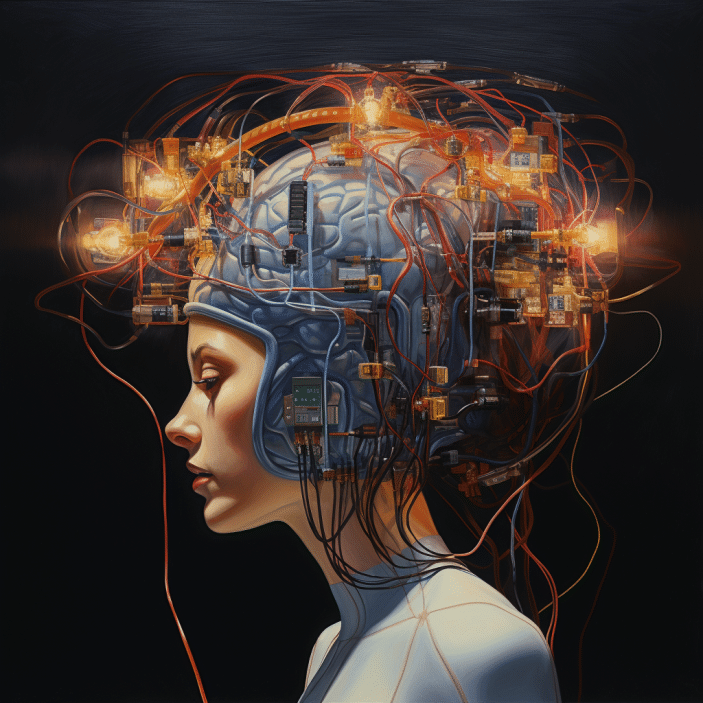Deep brain stimulation (DBS) of a brain region called the ventral capsule/ventral striatum (VC/VS) may provide long-term relief for people with severe, treatment-resistant obsessive-compulsive disorder (OCD), according to a new retrospective study.
Key findings:
- 6 out of 9 people with severe OCD achieved remission after DBS surgery
- It took an average of 14 months for symptom improvement to occur
- Benefits were sustained for years in some patients
- DBS was also effective for co-occurring depression
- Using rechargeable batteries lowered long-term costs
A research team at the University of Iowa recently reviewed outcomes of 9 people who underwent DBS for severe OCD that was unresponsive to medications and therapy.
They found that the surgery provided substantial symptom relief in the majority of patients.
Source: Front Psychiatry 2020
What is Deep Brain Stimulation?
Deep brain stimulation involves surgically implanting thin wire electrodes into specific areas of the brain.
These electrodes are connected to a neurostimulator device implanted under the collarbone or abdomen that sends electrical pulses to modulate abnormal brain activity.
DBS has been used since the 1990s to treat movement disorders like Parkinson’s disease.
More recently, researchers have begun studying DBS as a therapy for psychiatric disorders.
How Does DBS Work for OCD?
In OCD, abnormal activity occurs in brain circuits linking the prefrontal cortex, striatum, and thalamus.
By delivering electrical stimulation to key nodes in this circuitry, DBS may help restore more normal function.
The VC/VS target located in the striatum is one of the most studied for OCD.
Stimulation of this area may modulate hyperactivity in the orbitofrontal cortex that is associated with obsessions and compulsions.
DBS seems to have different effects than traditional psychosurgery techniques like cingulotomy that destroy brain tissue.
It can temporarily alter pathological signaling while allowing normal function to continue.
Study Background and Methods
Researchers at the University of Iowa identified 9 adults who received VC/VS DBS for severe treatment-resistant OCD at their hospital or another facility between 2010 and 2018.
The average age of the patients was 40 years.
Their average score on the Yale-Brown Obsessive Compulsive Scale (YBOCS) before DBS surgery was 34.2 out of 40, reflecting extreme illness.
The patients had suffered from OCD for an average of 22 years and failed to improve after trying an average of 13 different medications.
All also failed to benefit from cognitive-behavioral therapy.
The researchers reviewed the patients’ medical records to assess OCD symptoms and side effects over an average follow-up period of 4.5 years after DBS implantation.
Substantial Symptom Improvement in Most Patients
Out of the 9 patients who underwent VC/VS DBS for OCD, 6 achieved remission based on their YBOCS scores dropping below 12.
The average time to remission was 14 months, with a range of 2 to 32 months.
Two patients achieved remission by 12 months after surgery.
By 24 months post-op, 4 out of the 6 responders were in remission.
The other 3 patients showed little symptom improvement and were considered non-responders.
This suggests DBS provides robust effects in those who do respond.
At the last follow-up, after an average of nearly 5 years, 4 patients remained in remission or had a sustained response.
Two had experienced relapse of OCD symptoms.
Long-Term Mood Benefits from DBS

Of the 7 patients diagnosed with co-occurring major depressive disorder, 4 experienced complete remission of their depressive symptoms after DBS implantation.
This suggests stimulating the VC/VS region, which is close to the nucleus accumbens associated with motivation and reward, may also elevate mood in people with both OCD and depression.
Low Side Effect Burden
Patients tolerated DBS well overall with few adverse effects.
The most common were dizziness, racing thoughts, restlessness, and insomnia, typically occurring at higher stimulation voltages.
Most side effects were temporary or settings-specific and resolved with device adjustments.
One patient experienced hypomania after rapidly increasing voltage but improved after lowering stimulation.
Optimizing Treatment Outcomes
It took extensive programming sessions over months to years to find the most effective DBS settings for each patient.
This requires a knowledgeable multidisciplinary team.
The average settings used were:
- Voltage: 4.6 volts
- Pulse width: 210 microseconds
- Frequency: 135 Hz
Unipolar settings were most effective, with the case set as anode and the deepest electrode contacts as cathode.
Higher voltages were needed than for movement disorders, draining batteries quickly.
Rechargeable batteries proved more cost-effective long-term.
Takeaways from Case Studies
One treatment responder had previously undergone cingulotomy surgery with little benefit.
His later response to VC/VS DBS suggests the modulation of brain activity may differ from permanent lesioning.
Another patient responded solely to left-sided VC/VS stimulation, contrasting the theory that OCD is right-lateralized.
This highlights how DBS effects can vary drastically between patients.
One non-responder had OCD onset before age 15 and anorexia nervosa comorbidity, suggesting early onset and having multiple psychiatric disorders may predict worse outcomes.
Next Steps in OCD Neuromodulation
While promising, DBS for OCD requires further study to identify ideal candidates, optimize techniques, and determine mechanisms.
Larger controlled trials are needed to develop standardized programming protocols and identify biomarkers of response.
DBS provides a platform to investigate OCD neurocircuitry.
Overall, this study adds to the evidence that VC/VS DBS is a safe, effective intervention for some cases of debilitating OCD.
More research is critical to expand access for those who may benefit.
References
- Study: Deep brain stimulation for OCD: A long-term naturalistic follow up study in a single institution
- Authors: Marshall T. Holland et al. (2020)







